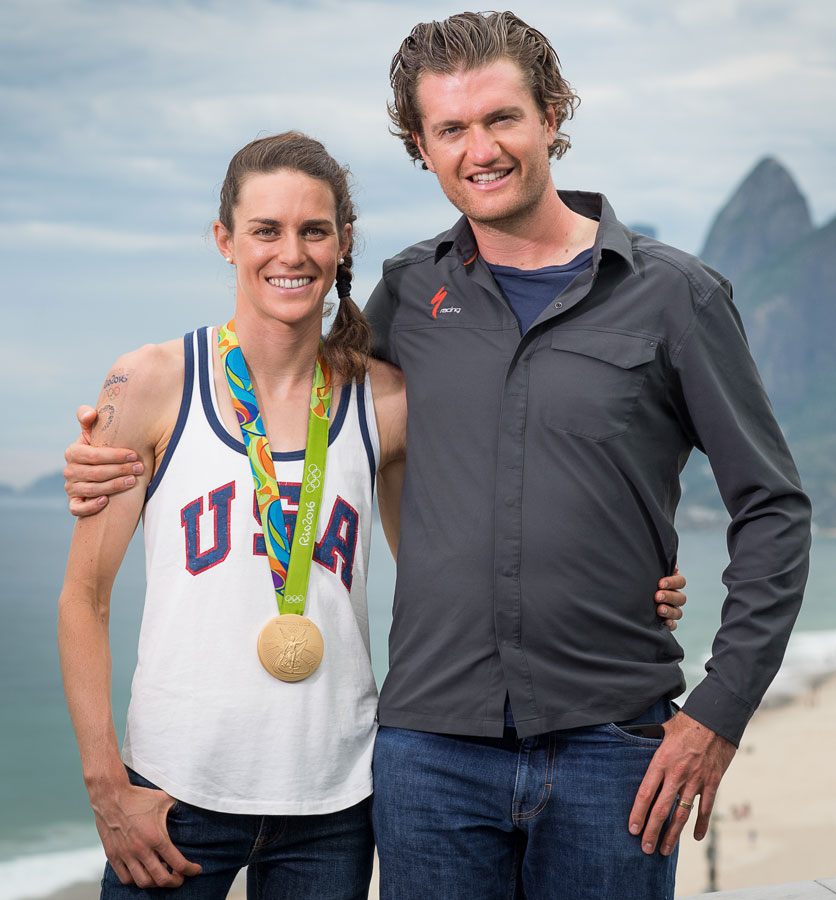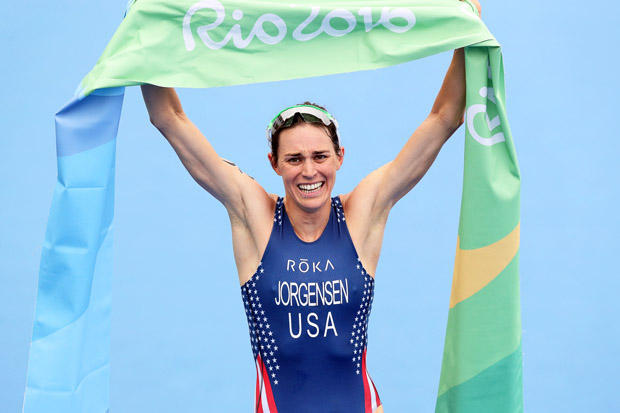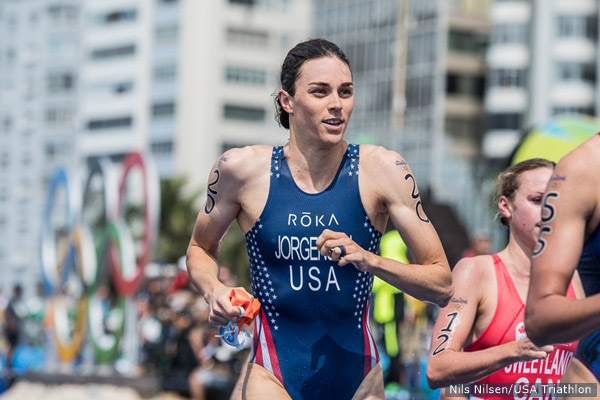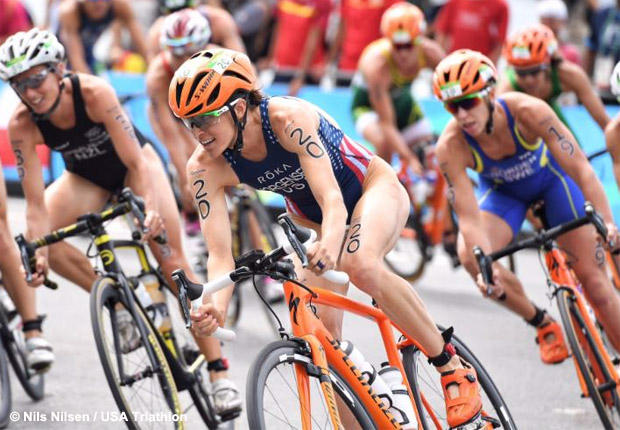Gwen’s Bike Racer Husband on WTS Cycling
Patrick Lemieux is Gwen Jorgensen’s husband. By now many triathletes know the story of how he gave up a career as a professional cyclist to be what he himself calls a stay-at-home husband.
Patrick and Gwen met on a bike ride in 2011 and he’s seen his own wife, along with the growth of the rest of the ITU circuit regulars, mature as cyclists.
Triathlon experts abound who could tell me how the Olympic side of the sport has developed in sophistication. Patrick is unique in that he’s seen Gwen and the others develop the viewport of a high-end cyclist specializing in criteriums.

I asked Patrick about equipment; he clarified some things. As you’ll see below Gwen races pretty wide tires, 25mm or 26mm, and I assumed that meant Specialized Turbo Cottons. I was shocked to find out Gwen doesn’t race clinchers, only tubulars, mounted on HED wheels. If there was any company that made a clincher worthy of racing it was Specialized. I can only assume – but did not have the presence of mind to ask him – that Patrick’s choice has to do with the speed of changing a flat (Gwen is the only person in the women’s field who could suffer a flat, change it, and still conceivably win a WTS race).
Here are a few of the questions I asked Patrick along with his responses.
SLOWTWITCH: Let’s talk cycling. When you watch ITU racing at the WTS level, are you thinking, man, these guys would compete very well if they jumped into Pro-1-2 criteriums. Or are you thinking, my gosh, if they actually did what I told them it would change the dynamic of the bike leg?
PATRICK LEMIEUX: With ITU or any bike racing armchair quarterback is the easiest position, right? When I was racing, you still bang your head on the wall and say why on earth would that team be doing that? There are certain men and women in the WTS field that you go ah, man, you are so strong, but you’re really dumb. Then there are people that I train with, Gwen’s group, they’d all be fantastic cyclists. They’re savvy. They’re great. But everybody’s fallen victim to doing dumb stuff at one time or another.
ST: I don’t think bike racing has changed much in, say, 3 years. Tactics, know-how, skills haven’t changed too much. Do you think ITU bike racing has changed a lot over the last 3 years?
PL: In the women’s the racing has evolved quite a bit. If you go back and watch from like 2010, 11, 12 forward to 14, 15, 16, in the earlier years it sure seemed like the second group came up a lot. Now it seems like, if you’re second group, third group, if you don’t come out of the swim in the first group you don’t have a chance.
In the men’s it takes the Brownlees and Javier to be there typically for the men to stay away. It depends who’s in the race whether the front group stays away. I think also in the last couple-three years the courses have changed. The courses have become more technical. Not as many wide open courses like San Diego or Hyde Park in 2012. These courses now would be challenging courses to bike race on as well. Those races really favor a Brownlee or a Gomez or a Flora Duffy on the women’s side.
ST: The mini aero bars. Are you in favor of those for triathlon or do you think the sport should just get rid of those?
PL: If I was racing they’d always be on my bike. If I race something like a gravel race they’re always on my bike. However I think that they probably can disappear. I don’t think they need to be in the sport anymore. Originally they made the sport stand out, but I think the riders – I mean Gwen had them on her bike for 3 years – this year we did away with them, decided to not use them for the entire year. I think the athletes have voted. You don’t see them like you did 5 years ago.
You just fly when you have them on, it’s crazy, but for a 40k criterium? Probably not. But you never really want them on until you need them, and then you wish you had them. I’m on the fence. But you look at the field now the athletes have voted. They’re not using them.
ST: Specialized is your wife’s sponsor. How involved do you get? It is just Gwen, Jamie [Turner, Gwen’s coach], the guys at Specialized, their decision, or do you get in there and say, nah, send this new stem out, the bars, we need to change them?
PL: I play a pretty big role in that, but if you look at a picture of Gwen’s bike from 2012, there’s been a slow evolution in her fit, she used to be on 42cm bars now she’s on 38cm, she was on a 120mm stem, now she’s on a 130mm. She’s moved to a women’s saddle. I’ve been a big proponent of not doing anything that’s crazy. In ITU racing we were always going to err on the side of caution, and go in favor of reliability.
Four years ago I was catching a ton of flack for putting 26mm tires on her bike, now the field’s on them. I wanted something where she was going to get a lot of contact on the pavement. I wanted something that would roll over glass or whatever. All she needed to do was get to the start of the 10k, with her bike remaining in one piece. We needed something reliable, lightweight, versatile, the same bike we used in 2012 at Hyde Park was basically the same bike she used in Rio. Luckily Specialized has a huge ability to get her what she needs.
[Editor's note: The case for tubulars because of quick tire changes hit a snag when, upon inspection, it appears ITU racers like Gwen don't typically carry spares in Olympic or sprint WTS races. So, scratch that. I'll find out Patrick's thinking on tubies versus clinchers and report back.]




